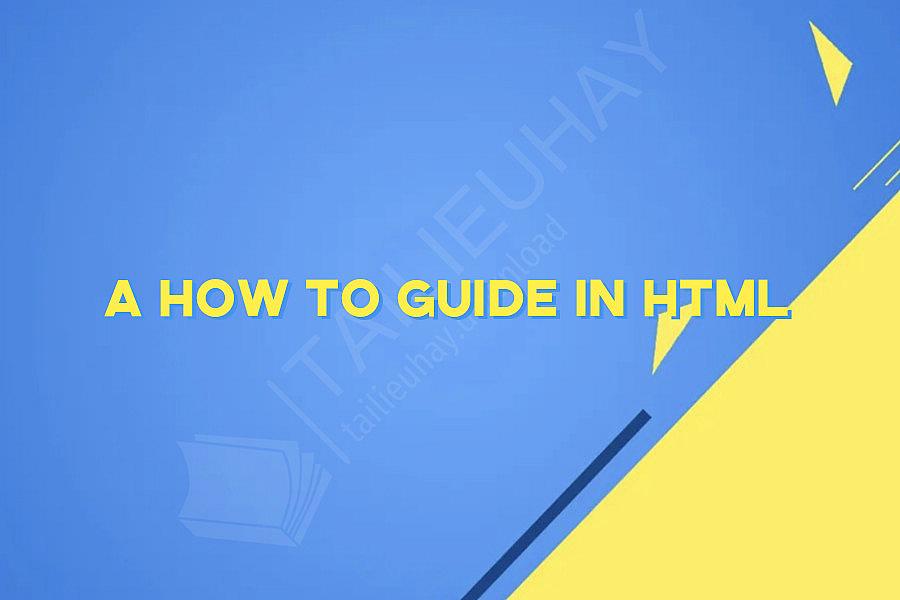A HOW TO GUIDE IN HTML

1) Getting started
Before you get started, you need an application to write your code. A popular application for writing HTML code is Notepad++. Simply open Notepad++, click on File, and then select New. Once you have a new document open, you can begin writing HTML code.
2) HTML Tags
HTML code is written using tags, which are used to define the structure of a web page. Tags are enclosed in angle brackets < > and are of two types: opening tags and closing tags. An opening tag represents the beginning of an element, and a closing tag signifies the end of an element. For example, the opening tag for the title element is
3) HTML Elements
HTML elements are used to define the various parts of a web page. Elements are created using tags and have attributes that add extra information to the element. For example, the
4) HTML Headings
Headings are used to define the sections of a web page. HTML provides six different levels of headings from
to . The tag represents the most important heading, and the tag is the least important. The heading element is typically used to define the title of the web page and subheadings within the content.
5) HTML Paragraphs
Paragraphs are used to define blocks of text in a web page. The
tag represents the most important heading, and the tag is the least important. The heading element is typically used to define the title of the web page and subheadings within the content.
5) HTML Paragraphs
Paragraphs are used to define blocks of text in a web page. The
5) HTML Paragraphs
Paragraphs are used to define blocks of text in a web page. The
tag is used to create a new paragraph. Within a paragraph, other text formatting can be applied using tags such as for bold, for italic and for underline.
6) HTML Links
Links are used to connect one web page to another. The tag is used to create a hyperlink to another web page. The href attribute specifies the URL of the destination web page. Links can also be used to create internal links within a web page using the ID attribute.
7) HTML Lists
Lists are used to present information in a structured way. HTML provides two types of lists: ordered and unordered. An ordered list is created using the tag and numbered bullets, while an unordered list is created using the
tag and uses bullet points. Within lists, list items are created using the
8) HTML Tables
Tables are used to organize information into rows and columns. The tag is used to create a new table, while
tags are used to create rows and tags are used to create cells within the rows.
9) HTML Forms
Forms are used to collect user input on a web page. The